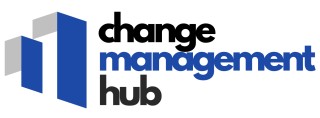
Understanding the Role of ITOM in Change Management
Understanding the Impact of ITOM on Change Management Processes
In today’s digital landscape, effectively managing the various aspects of change management is crucial for businesses striving to maintain operational efficiency. IT Operations Management (ITOM) plays a pivotal role by overseeing and regulating the infrastructure necessary for seamless integration of change processes within an organization. ITOM's primary function involves the coordination and management of various IT services with a keen focus on maintaining service delivery, minimizing disruptions, and ensuring that hardware, software, and other assets are consistently available to support business operations. This is especially important in environments where service interruptions can result in significant drawbacks. By utilizing ITOM, organizations can implement a framework that supports robust processes for smoother transitions and minimizes the risks associated with rolling out changes. This extends beyond the scope of merely deploying patches or software updates. ITOM encompasses a comprehensive approach that aligns with strategic business goals, ultimately fostering an environment where change management can thrive. Various tools and solutions like ServiceNow ITOM facilitate the automation and integration of processes, leading to enhanced operations management. With a focus on configuration management and asset management, businesses can address potential challenges before they escalate into significant issues. For those looking to delve deeper into enhancing their risk response and operational resilience during these processes, insights can be gleaned from real-world project teams’ working sessions. Learn more about how strategic responses can bolster your organization’s ability to tackle changes by reading this insightful guide. As we explore further into this subject, leveraging other elements like IT Asset Management (ITAM) and IT Service Management (ITSM) proves beneficial, accenting ITOM’s significant contribution to holistic change management. By integrating these elements, businesses can drive not only operational efficiency but also overall business success.Leveraging ITAM for Effective Change Management
Asset Management's Role in Change Management
Leveraging ITAM, or IT Asset Management, plays a pivotal role in the realm of change management. By effectively managing the lifecycle of assets within an organization, service management processes are streamlined, ultimately supporting smoother transitions and changes. Asset management is not just about tracking hardware and software; it delves into ensuring that every asset's data is up-to-date and utilized efficiently during transitions.
One of the keys to successful asset management lies in the meticulous management of data associated with these assets. Inadequate data can lead to misinformed decision-making processes, which can disrupt business operations. By having precise and real-time data, ITAM supports informed decisions during change management, ensuring minimal disruption to services and operations.
Furthermore, ITAM offers invaluable insights for financial decisions within the organization. Through asset management, businesses can avoid unnecessary expenditures on redundant or unused assets, optimizing the budget for better allocation. This, in turn, contributes to operations management by maintaining only the essential hardware and software required for current and future needs.
Integration with ServiceNow enhances ITAM's capabilities, as it allows for real-time collaboration across ITOM, ITSM, and ITBM functions. This integration supports a seamless and holistic approach to services implementation, ensuring the entire IT infrastructure aligns closely with the organization's strategic goals. By effectively leveraging ITAM within change management, businesses can transition more smoothly while maintaining a strong focus on asset lifecycle and accountability.
Enhancing Service Delivery with ITSM in Change Management
Improving Service Outcomes with ITSM Practices
In the realm of change management, the integration of IT Service Management (ITSM) cannot be overstated. ITSM practices focus on aligning IT services with the needs of the business, ensuring effective service delivery that supports overall organizational goals. Utilizing a platform like ServiceNow for ITSM implementation enables streamlined service management solutions, optimizing operations management while improving customer service experiences.
To effectively manage change within an organization, ITSM provides key processes such as incident, problem, and configuration management. These processes not only aid in managing IT operations but also ensure that changes are handled systematically, reducing disruptions and maintaining the integrity of the IT infrastructure.
Asset management is another crucial aspect of ITSM. By effectively managing hardware and software assets, organizations can gain better visibility into their IT ecosystem, enabling informed decision-making regarding changes and investments. Managing assets within the ITSM framework supports seamless integrations with ITAM and ITOM, ensuring a holistic approach to change management.
Best practices in ITSM emphasize the importance of continuous service improvement. By leveraging data-driven insights, organizations can identify areas of improvement, optimize processes, and enhance service delivery outcomes. This not only supports change management by making transitions smoother but also ensures that IT services evolve in line with business needs.
Organizations that excel in ITSM are better positioned to drive business success, supporting both IT and business operations with a robust service management framework. Building an effective change team ensures that these improvements are carried out successfully, with buy-in from all stakeholders.
Driving Business Success with ITBM in Change Management
Transforming Business with Service Management
In the realm of change management, the role of ITSM (Information Technology Service Management) extends beyond merely managing IT services. It involves aligning IT processes with business objectives to enhance service delivery and improve customer satisfaction. ITSM, when integrated thoughtfully, can significantly bolster an organization's service management capabilities. It supports the implementation of standardized processes to effectively manage IT services throughout their lifecycle. This ensures that business operations run smoothly without disruptions.Supporting Change Management
One of the key benefits ITSM brings to change management is the establishment of change control processes. These processes help manage the flow of changes within IT infrastructure, reducing risks associated with the implementation phase and ensuring that changes are delivered in a controlled manner. Configuration management, a critical component of ITSM, maintains and manages data on all configuration items in an organization’s ecosystem. This provides a solid foundation to support change management initiatives. With accurate data on assets and their interrelations, companies are better equipped to predict the impact of changes and mitigate potential risks.ServiceNow: A Comprehensive ITSM Solution
Implementing ITSM with solutions like ServiceNow can yield substantial benefits for businesses seeking to optimize their change management processes. ServiceNow empowers organizations with real-time visibility into services and operations, supporting informed decision-making and proactive change management. Organizations using ServiceNow for ITSM can streamline operations management, foster better communication between IT and business departments, and ensure continual alignment with organizational goals. This not only reduces costs but also improves service quality.Best Practices for ITSM in Change Management
Adopting best practices is vital for successful ITSM implementation. Organizations should focus on:- Establishing clear goals and aligning them with overall business objectives
- Regularly training staff on ITSM and its benefits
- Encouraging collaboration between IT and other business units
- Continuously reviewing and refining ITSM strategies to improve service delivery
Integrating ITOM, ITAM, ITSM, and ITBM for Holistic Change Management
Uniting IT Functions for Comprehensive Change Management
In today's fast-paced business world, managing an organization's infrastructure and assets effectively requires a robust integration strategy. By uniting ITOM, ITAM, ITSM, and ITBM, businesses can streamline processes, enhance service delivery, and optimize operations management. When implementing change management practices, IT Operations Management (ITOM) focuses on the backbone of IT infrastructure, ensuring that necessary system updates are deployed smoothly. This guarantees minimum disruptions to ongoing operations and solidifies the foundation on which other management functions build. Asset Management (ITAM) plays a pivotal role in managing organizational assets, from hardware to software. Through proper configuration management, ITAM provides the necessary data to support change management decisions, offering insights into asset lifecycle and enabling informed decision-making. Service Management (ITSM) further enhances the process with its customer service-focused approach, ensuring that service delivery aligns with business objectives. ITSM delivers structured processes to manage requests and incidents, effectively supporting the entire change management lifecycle and minimizing risk. Business Management (ITBM) rounds out this integration by aligning IT changes with business goals. Focusing on outcomes, ITBM drives business success through strategic change initiatives, thus safeguarding that any change not only supports but propels the organization's strategic objectives. Leveraging these integrated solutions empowers organizations to manage changes holistically. This synergy ensures that all functions are aligned with business needs, providing a seamless, efficient change management structure that leverages best practices and data-driven insights.Real-World Case Studies and Lessons Learned
Learning from Real-World Implementations
Understanding and managing change is essential for any organization. By integrating Itom, Itam, Itsm, and Itbm, organizations have improved their operations management and service delivery. Let's explore some real-world case studies and the lessons learned from their implementations. Implementing effective management solutions requires the coordination of infrastructure, assets, and best practices. Many organizations have leveraged Itsm services to enhance their customer service, streamline processes, and support operations.-
Case Study 1: A Technology Firm
This tech firm faced challenges with asset management and configuration management. By deploying Servicenow Itom, they were able to enhance their data management and align their processes with business objectives. The company improved its service management and reduced downtime, showcasing how Itom can drive efficiency. -
Case Study 2: Financial Institution
Facing asset and operations management challenges, this financial institution adopted Itam and Itsm. Through Servicenow implementation, they optimized hardware software management and improved their service delivery. The integration of Itam Itsm helped them better support their infrastructure, achieving smoother service delivery and stronger compliance. -
Case Study 3: Health Services Provider
A health services provider sought to improve their overall service management with business operations. By utilizing Itbm, they were able to drive business success and align operations with their strategic vision. The use of Itbm demonstrated effective change management, leading to enhanced organizational performance.













